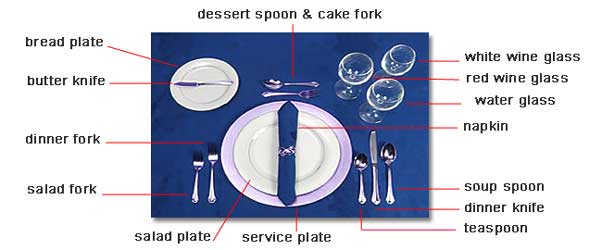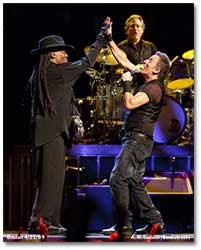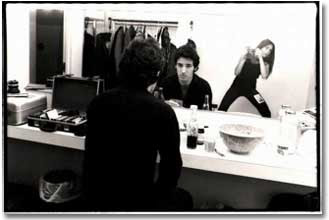
No sólo la comida, sino la forma de comer nos brindan la oportunidad de ver las diferencias culturales que nos definen.
(Not only food, but also the way of eating provide an insight into the cultural differences that define us.)
Lo que consideramos buenos modales en la mesa resulta grosero en otras culturas y viceversa. En Alemania, por ejemplo, no utilice nunca el cuchillo para cortar las patatas hervidas que te sirven porque ofenderás a la anfitriona (estás dando a entender que no están suficientemente tiernas). Sorbe ruidosamente los fideos en Japón y en China –demuestra que disfrutas de la comida.
(What we consider proper table manners looks rude in other cultures and vice versa. In Germany, never use your knife to cut the boiled potatoes you are served because you will insult your hostess (you are implying that they are not tender enough). Slurp your noodles in Japan and China– it shows you are enjoying your lunch.)
Hay tres formas muy extendidas de comer: con cubiertos, con palillos o con los dedos; y cada una tiene sus reglas. ¡Echémosles un vistazo!
(In general there are three widespread ways of eating: with cutlery, with chopsticks or with your fingers; and each one has its rules. Let's have a glance at them!)
CON CUBIERTOS
La cultura occidental utiliza el cuchillo, el tenedor y la cuchara, aunque hay dos formas de utilizarlos: el estilo norteamericano y el estilo europeo.(Western culture uses knife, fork and spoon, although there are two styles to use them: The American style and the European style.)

El estilo norteamericano (también llamado "método zigzag"): el cuchillo en la mano derecha, el tenedor en la mano izquierda, con los "dientes" siempre hacia abajo. Corta un bocado, coloca el cuchillo en el borde del plato, con el filo hacia dentro. Pasa el tenedor a la mano derecha y llévate la comida a la boca. La mano izquierda reposa sobre tu regazo –aunque esto es cada vez menos frecuente y dejas la mano izquierda sobre la mesa. Repite el proceso para cada bocado.
(American Style (or zigzag method): Knife in your right hand, fork in your left hand, tines down. Cut a bite-sized piece of food, then place the knife on the edge of the plate with blade facing in. Switch the fork to the right hand and bring the food to the mouth. Your left hand stays on your lap, although, today this is less and less common and you can leave it on the table. Repeat for each bite.)
Una vez utilizados, los cubiertos no deben volver a tocar la mesa, ni siquiera el mango. Siempre déjalos en el borde del plato.
(Once used, utensils, including the handles, must not touch the table again. Always rest them on the side of the plate.)
El estilo europeo: no se cambian los cubiertos de mano –se come con el tenedor en la mano izquierda.

(European Style: You don't switch hands –you eat with your fork in your left hand.)
Cuando se hace una pausa mientras se come, se indica que no se ha acabado también hay dos formas distintas de hacerlo:
(When you pause while eating, and you have not finished yet, there are also two ways of showing it:)
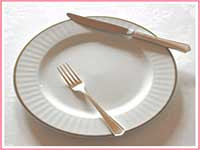 |  |
Cuando finalmente se ha acabado de cenar:
(When finally you are done with your dinner:)
 |  |
CON PALILLOS
 | 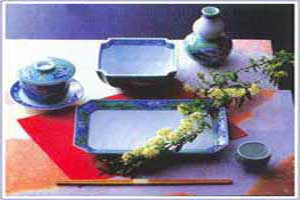 |
Los palillos se utilizan en toda Asia Oriental (China, Corea y Japón), aunque se cree que nacieron en China durante la Dinastía Shang (1766 a.C. – 1122 a.C.), hace más de 3000 años. También se le atribuye a Confucio su extensa popularidad ya que éste equiparaba los cuchillos con actos de agresión lo que iba en contra de sus enseñanzas y por lo tanto no tenían cabida en la mesa.
(Chopsticks are used in the whole eastern Asia, including China, Korea and Japan although it is believed that they originated in China during the Shang Dynasty (1766 BC - 1122 BC), more than 3,000 years ago. Confucius equated knives to acts of aggression which went against his teachings and thus, did not allow them on his table.)
Tanto el protocolo chino como japonés comparten algunos tabúes al utilizar los palillos que tenemos que tener en cuenta:

(Both Chinese and Japanese etiquettes share some taboos about using chopsticks that we may pay attention to:)
• No apuntar nunca con los palillos
(Never point your chopsticks.)
• No cruzar los palillos.
(Do not cross your chopsticks.)
• No pinchar la comida con los palillos.
(Do not pierce your food with chopsticks.)
• Si queremos algo que está fuera de nuestro alcance y otra persona se ofrece para pasarlo, pásale tu plato. Pasar algo de palillos a palillos simboliza la muerte de un ser querido.
(If you want something that is out of reach and another person offers to pass it to you, give them your plate. The passing of an object from chopstick to chopstick has come to symbolize death of a loved one.)
• Vuelve los palillos y utiliza la parte ancha para coger algo de un plato de servir.
(Turn your chopsticks around and use the wider ends when taking something from a serving dish.)
CON LOS DEDOS
En la India, en partes del Sureste Asiático y en África, una gran mayoría de gente disfruta de la comida con todos los sentidos —la vista, el olfato, el gusto...y el tacto: comen con los dedos.
(In India, parts of Southeast Asia and in Africa, a great majority of people enjoy the process of eating with as many of the senses as possible –sight, smell, taste and... touch: they eat with their fingers.)
A pesar de que mucha gente puede verlo como una falta de higiene, lo que está claro es que al lavarse bien las manos antes de comer, podemos estar seguros de la limpieza del "cubierto" que nos llevamos a la boca.
(Although many people can see it as a lack of hygiene, what is clear is that as you wash thoroughly your hands before eating, you can be really sure about the cleanliness of the utensil you bring to your mouth.)
Por supuesto, aquí también existen convenciones y, la más importante es: sólo se utilizan tres dedos y el pulgar de la mano derecha –la izquierda sólo se utiliza para pasar platos si es necesario
(Obviously, there are also conventions of good manners when eating with your fingers. The most important is: only use three fingers and the thumb of your right hand –your left hand is for passing a dish, if necessary.)
 (Via)
(Via)Empieza a comer cogiendo comida con el pan. Corta un trozo pequeño de torta (con una sola mano, si sabes) y envuélvelo sobre un bocado de verduras o carne y llévatelo a la boca.
(Start eating by picking the food up with the bread. Tear off a small piece of flatbread (only with one hand) and place it over some of the vegetables or meat folding the bread over the top of the food and eat it.)
• Mezcla un poco de arroz y curri en el plato con la punta de los dedos.
(Mix a bit of curry and rice together on the plate to make a little ball.)
• Forma una pelotita con la punta de los dedos y la ayuda del pulgar.
(Make a small ball with your thumb and the tip of your fingers)
• Llévate el bocado a la boca y con el pulgar, suavemente impulsa la comida en la boca.
(Move the food to your mouth and use your thumb to gently catapult the food into your mouth.)
Bueno, ésto sólo es un vistazo superficial a unas costumbres bastante complejas; y ahora a practicar estas vacaciones, viajando. En cualquier caso, creo lo importante es que seamos educados y respetuosos, observemos a nuestros anfitriones y los imitemos.
(Well, this is just a quick look at rather complex customs and now we have to practise during our holiday travelling abroad . All in all, I think the most important thing is to be polite and respectful, to watch our hosts and follow their lead.)
Y, hablando de vacaciones, durante el mes de agosto este blog estará de vacaciones. Mientras tanto os deseo unas muy descansadas y felices vacaciones y espero veros a la vuelta el día 1 de septiembre. ¡Hasta la vuelta!
(Speaking of holidays, during August this blog will be on holiday too. Meanwhile, enjoy a very restful and happy holiday and I hope to see you around by September 1. See you then!)

Fuentes: International Etiquette, Customs and Protocol Guide - Etiquette Scholar

